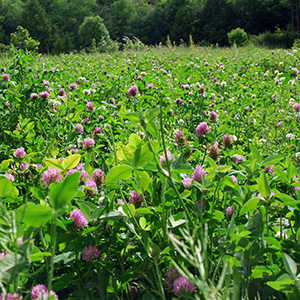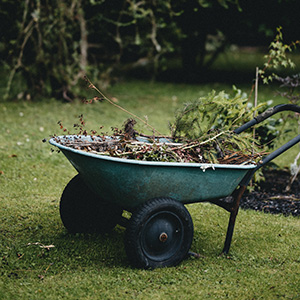- >
Garden Care Tips for Winter
- By: Cheli Scott
- Date: Dec 07 2022
Similar Articles
Artificial Turf vs Sod for Lawns, Backyards & DIY Makeovers
Thinking about artificial turf or sod? Discover the pros and cons of each—from cost and maintenance to durability and pet-friendliness—so you can choose the best option for your lawn or backyard project.
Travertine vs Concrete Pavers for Florida Pool Decks, Patios, Fire Pits & More | bhild
Compare travertine and concrete pavers for Florida pool decks, patios, and driveways — from heat retention and slip resistance to cost, maintenance, and curb appeal.
Beat the Heat: Florida Summer Landscape Survival Guide
Beat the Florida heat with smart summer landscaping. From drought‑tolerant plants to shaded retreats, this guide covers designs, materials, and maintenance tips to keep your yard thriving all season long.
Garden care tips for winter
As the weather cools we’ve prepared some garden care tips for winter to keep your garden and lawn prepared for the growing season. While it doesn’t seem like there should be a lot going on in your yard during the winter season, there are still things you need to do to keep your garden healthy and there are a surprising amount of plants you can grow for aesthetic appeal or consumption.
Planning your garden for the winter season
The most exciting part of any season is planning what you will plant! In the winter season there is still planning to be done, even if you are just preparing your garden for spring. While your beds are empty you can take the opportunity to make repairs, expand your garden, and maintain your tools. Don’t let the cold weather keep you from planting, however, winter is a good time to plant evergreens and shrubs in addition to winter crops.
Winter gardening
Despite what you may think, winter doesn’t have to be bleak in your garden. There are flowering trees, bushes, and plants that thrive in the colder season.
There are even winter vegetables you can grow like root crops, brussels sprouts, onions, cabbage, cauliflower, and garlic. There are some herbs like rosemary and thyme that can survive the cold season, but herbs also do well grown indoors during the colder months.
There are a number of beautiful winter flowers you can grow to keep your garden colorful all year. Violas, primroses, and crocuses are just a few of the many flowers that withstand winter temperatures.
Camellias and holly are two beautiful bushes that are also synonymous with winter and can add color to your garden with relatively low upkeep. Decorative kale adds a lot of texture and color to your garden beds.
Seed heads can create a lot of visual interest in a winter garden as well as attracting native birds, so don’t be afraid to let them be. You can add plants like coneflower and black eyed Susan to your garden for color in the growing season, but pretty seed heads in your winter garden.
Sow cover crops
You can grow cover crops like clover in the winter time. These plants add nitrogen to your soil and prevent soil erosion over the winter months. They are very simple to plant and tend to grow easily.
They also crowd out invasive plants and can have other properties that improve your soil. Cover crops do an excellent job of preventing erosion by holding soil in place with a complex root system. Experts recommend planting cover crops one month before the first frost.
There are many different kinds of cover crops, but some have qualities that make them more interesting than others.
Brassicas, the common name for the group of plants including arugula, kale, and radishes, have qualities that protect your plants from soil born diseases when they are tilled into your soil in the spring time. They can also suppress weeds and improve soil structure.
Grasses like oats and barley also make good cover crops, returning nitrogen to the soil when they are broken down and aerating soil. Legumes such as field peas, clover, and alfalfa make pretty cover crops that add a lot of interest to a winter garden.
Weed garden beds and clean up debris
The winter season is a good time to weed and remove unwanted plants. Thorough weeding will prevent weeds from taking over during the winter months and will reduce the likelihood of diseased plants sitting and spreading sickness to other plants.
Don’t put weeds you pulled up in your compost pile or you are likely to find them popping back up in your yard again.
Pests love dead, dry plants where they can make their homes, so be sure to gather up leaves, dead stems, and branches. Freezing temperatures kill off diseases over winter, so its sometimes a good thing to allow the ground to freeze. Collected leaves and debris will insulate the ground, preventing it from freezing and killing off blight.
Prune trees and shrubs
Pruning dead branches from trees and shrubs will leave them shaped and prepared for dry winter weather and potentially snow. Fall pruning should include any unwanted lower branches and then prune any overgrown branches that reduce light and air from reaching the crown of the tree.
Fertilize your lawn, trees, and shrubs
Fertilizing your lawn in winter can feed the roots to store nutrients for spring. Fertilize just before the expected frost date for the best results. Do not fertilize warm season grasses in winter.
You can also fertilize trees in the winter. Look for leaf color changes to know when your tree or shrub is entering dormancy and fertilize them with a slow release fertilizer.
If you are not growing anything in your garden beds during the winter season, you don’t need to fertilize, but it if you want to give your garden a boost in the spring consider growing cover crops.
How to prepare for freezing temperatures
If you live in area where the temperature drops below freezing, there are a few steps you will need to take to keep your plants protected.
Delicate potted and tropical plants need to be taken indoors before the first frost. You can cover small trees and shrubs with burlap or sheets to hold in the warmth from the earth. You may also want to wrap rose bushes in burlap after pruning to protect them.
You can extend the life of winter season annuals by using floating row covers to protect them from cold weather or a cold frame.
A cold frame is a type of cover built over your seedlings to protect them from inclement weather while still allowing sunlight to get in. Cold frames can be made with wood and plexiglass or even with simple straw bales topped with plastic covers.
Aerate your lawn and garden beds
During the winter season your lawn is at special risk for compaction under extra rain and even snow. This is a good time to aerate your lawn, opening it up for water and nutrients to make their way down to the roots.
Mulch
Mulch helps stabilize the soil temperature for your plants in the winter season when the ground is freezing and thawing. Changing soil temperatures can damage plants and even force them out of their spots in the ground.
Applying mulch after a hard frost will help protect plants root systems from damage and hold in the heat from the earth.
If you have any bare soil, like empty garden beds, be sure to cover that with mulch as well. This will help prevent soil erosion and will add nutrients to the soil surface, preparing it for planting the next season.
Test and amend your soil
Winter is a great time to send a soil sample to your local extension office to be tested. A soil test will tell you your soil’s pH and what nutrients and minerals your soil has.
Once you receive the results, you can start preparing your soil for spring. Improving soil is a process and whatever you add to it will take time to break down. Winter is the perfect time to start building soil quality.
Continue your compost pile
While many know heat is an important aspect to composting, you can still compost in the winter. Decomposition will slow down as the temperature drops, but turning your compost pile and adding nitrogen rich materials can give it a boost until the weather warms.
If you find your compost is getting too wet due to rain or snow, you can try using a compost tumbler, which can help reduce moisture. You will also need to add insulation to your compost pile with cardboard, straw, or sawdust.
You can try a worm bin, which will supply you with compost, much like your outdoor compost pile.
Enjoy your winter gardening season
Winter gardening can be just as interesting and productive as gardening in the warm season. We hope these tips have helped you plan and reflect on your garden plants to have a beautiful yard during the cold months.
Preparing your lawn and garden for winter makes great DIY projects, but if you don’t want to do the work yourself, consider hiring an experienced landscaper like the ones at bhild.com. Call us today, or fill out our form here for a free estimate on lawn services!















